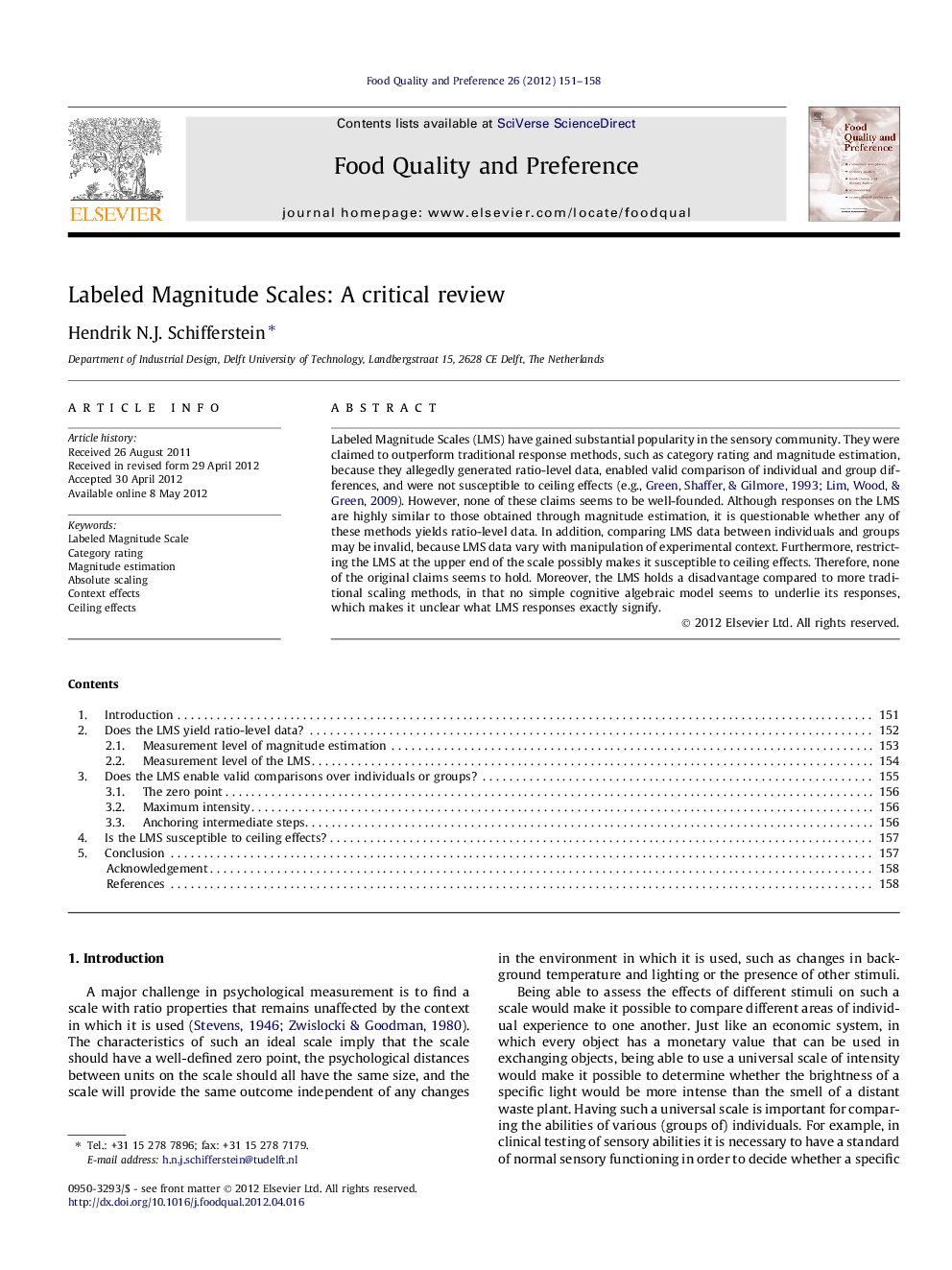| کد مقاله | کد نشریه | سال انتشار | مقاله انگلیسی | نسخه تمام متن |
|---|---|---|---|---|
| 4317463 | 1290596 | 2012 | 8 صفحه PDF | دانلود رایگان |

Labeled Magnitude Scales (LMS) have gained substantial popularity in the sensory community. They were claimed to outperform traditional response methods, such as category rating and magnitude estimation, because they allegedly generated ratio-level data, enabled valid comparison of individual and group differences, and were not susceptible to ceiling effects (e.g., Green et al., 1993 and Lim et al., 2009). However, none of these claims seems to be well-founded. Although responses on the LMS are highly similar to those obtained through magnitude estimation, it is questionable whether any of these methods yields ratio-level data. In addition, comparing LMS data between individuals and groups may be invalid, because LMS data vary with manipulation of experimental context. Furthermore, restricting the LMS at the upper end of the scale possibly makes it susceptible to ceiling effects. Therefore, none of the original claims seems to hold. Moreover, the LMS holds a disadvantage compared to more traditional scaling methods, in that no simple cognitive algebraic model seems to underlie its responses, which makes it unclear what LMS responses exactly signify.
► Labeled Magnitude Scale (LMS) unlikely to yield ratio-level data.
► LMS does not allow comparisons over groups, due to dependency on stimulus context.
► Restricting LMS to a maximum may result in ceiling effects.
► LMS lacks a simple underlying cognitive algebraic model.
Journal: Food Quality and Preference - Volume 26, Issue 2, December 2012, Pages 151–158